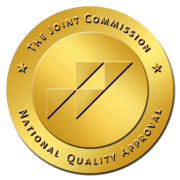Alcohol & Substance Abuse-Cost Effectiveness
The cost of significantly improving health coverage for alcohol abuse is very small. The overwhelming majority of employment-based health insurance plans cover some type of substance abuse treatment services, but usually with serious limitations and restrictions. The cost of removing these barriers amounts to only pennies per month according to a RAND Corporation study. The benefits to individuals, families and society are significant. Actuarial estimates by the Substance Abuse and Mental Health Services Administration (SAMHSA) suggest that upgrading employment-based health insurance coverage would increase premiums by 0.2 percent. “Workplace Solutions: Treating Alcohol Problems through Employment-Based Health Insurance”, The George Washington University Medical Center, 2003
United Airlines reported a return of $16.35 for every Dollar invested in EAP the first year of the program.
McDonnell-Douglas credited its EAP for a 44% reduction in missed work days and an 81% reduction in attrition rates. Also, initiating a “no behavioral health benefit limit, the company saw a 50% decrease in psychiatric inpatient admission costs; per capita mental health costs declined by 34%.
General Motors estimates that the cost decreases resulting from its EAP include: lost time, 40%; sickness and accident benefit, 60%; grievances, 50%; and on-the-job accidents, 50%.
A three-year Aetna study said medical costs per beneficiary dropped from $242 per person to $162 per person over three years time after the introduction of mental health (substance abuse) benefits.
Chevron saw a 21% decrease in psychiatric hospital admission costs when it encouraged utilization of outpatient substance abuse services and reimbursed them at 85% of usual and customary rates. www.employee-assistance-programs.com/benefits.htm
“More than 70 percent of the estimated costs of alcohol abuse for 1998 (for the U.S.) were attributed to lost productivity ($134.2 billion)… The remaining estimated costs included health care expenditures ($26.3 billion, or 14.3 percent of the total), such as the costs of treating alcohol abuse and dependence ($7.5 billion) and the costs of treating the adverse medical consequences of alcohol abuse ($18.9 billion)….” NIAAA
Promoting self-help group involvement appears to improve post-treatment outcomes while reducing the costs of continuing care. Even cost offsets that somewhat diminish over the long term can yield substantial savings. Actively promoting self-help group involvement may therefore be a useful clinical practice for helping addicted patients recover in a time of constrained fiscal resources.” Keith Humphreys11 Veterans Affairs and Stanford University Medical Centers, Palo Alto, California. and Rudolf H. Moos11Veterans Affairs and Stanford University Medical Centers, Palo Alto, California.
Companies that invest in an Employee Assistance Program, or EAP, can expect to recover significant losses on the order of five to seven dollars ($5 to $7.00) for every one dollar ($1.00) invested in the EAP.
DO YOU HAVE ANY ADDITIONAL QUESTIONS OR COMMENTS?
866.594.8844
contactus@twintowntreatmentcenters.com



